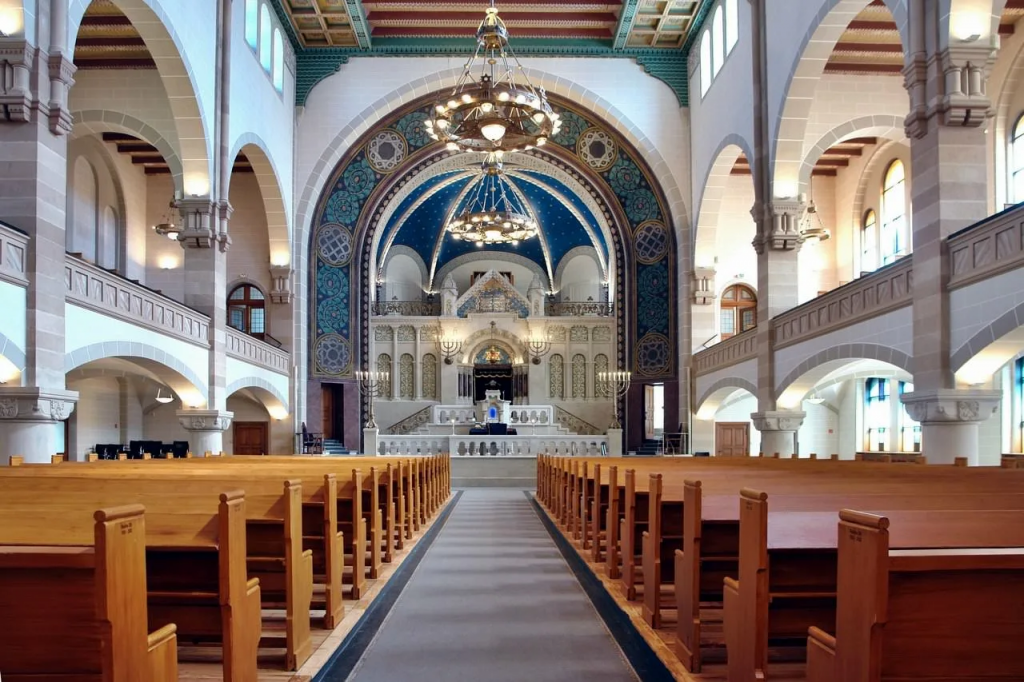Discovering the Rich History of Planty Kielce and the Synagogue in Kielce
Discovering the Rich History of Planty Kielce and the Synagogue in Kielce
Blog Article

planty kielce , a picturesque city in southern Poland, is steeped in history, culture, and natural beauty. Among its many treasures are Planty Kielce, a tranquil park beloved by locals and visitors alike, and the Synagogue in Kielce, a significant site that speaks to the city's rich Jewish heritage. In this article, we’ll delve into the history, significance, and charm of these two landmarks, exploring what makes them integral to the city’s identity.
Planty Kielce: A Green Oasis in the Heart of the City
Planty Kielce is one of the most cherished green spaces in the city. Nestled in the center of Kielce, this park offers a peaceful retreat from the hustle and bustle of urban life. With well-maintained walking paths, vibrant flowerbeds, and a variety of trees, it serves as a perfect spot for relaxation, family outings, or a casual stroll.
A Brief History of Planty Kielce
synagoga kielce traces its origins back to the early 19th century when the city’s authorities decided to create a public park. Over the decades, the park evolved, becoming a centerpiece of urban planning in Kielce. Today, it spans several hectares and is known for its serene ambiance and well-thought-out landscaping.
The park is designed to offer something for everyone. Families can enjoy its open spaces, children can play in designated areas, and those seeking solitude can find quiet corners to unwind. Seasonal flower displays and art installations often adorn the park, adding to its charm and appeal.
Cultural and Social Significance
Beyond its natural beauty, Planty Kielce is a cultural and social hub. Throughout the year, the park hosts various events, including outdoor concerts, art exhibitions, and community gatherings. It also serves as a venue for educational initiatives, such as guided nature walks and workshops on environmental conservation.
One of the unique aspects of Planty Kielce is its connection to the city's history. Plaques and monuments scattered throughout the park commemorate significant events and figures from Kielce’s past, making it a living testament to the city’s heritage.
Synagogue in Kielce: A Window into Jewish Heritage
While Planty Kielce offers a serene escape, the Synagogue in Kielce provides a poignant connection to the city’s rich Jewish history. This historic building, though no longer functioning as a place of worship, stands as a reminder of the vibrant Jewish community that once thrived in Kielce.
Historical Background
The Synagogue in Kielce was constructed in 1903 and served as the spiritual center for the city’s Jewish population. Its architectural design reflected a blend of traditional and modern styles, with intricate details that highlighted the community's cultural pride.
During World War II, the synagogue suffered significant damage, as did many Jewish institutions across Europe. The Holocaust decimated the Jewish population of Kielce, leaving the city’s Jewish heritage in ruins. The synagogue itself was repurposed during and after the war, but it remains a symbol of the once-flourishing Jewish life in the region.
Modern Significance
Today, the synagogue is no longer used for religious purposes but has been repurposed as a cultural and educational site. Efforts have been made to preserve the building and its historical significance. It now hosts exhibitions, lectures, and events aimed at educating the public about the Jewish heritage of Kielce and Poland as a whole.
Visitors to the synagogue can learn about the history of Kielce’s Jewish community, including its contributions to the city’s cultural and economic life. The site also serves as a venue for commemorative events, such as Holocaust remembrance ceremonies, fostering dialogue and understanding between cultures.
The Kielce Pogrom: A Dark Chapter
The history of the synagogue and the Jewish community in Kielce cannot be separated from the tragic events of the Kielce Pogrom in 1946. This post-war atrocity resulted in the deaths of 42 Jewish survivors who had returned to the city. The pogrom shocked the world and remains a painful chapter in Kielce’s history.
Today, the synagogue and nearby memorials stand as places of reflection and remembrance. They remind us of the importance of tolerance, understanding, and the need to preserve history to ensure that such tragedies are never repeated.
Bridging the Past and Present
Planty Kielce and the Synagogue in Kielce may seem like contrasting landmarks—one a vibrant park and the other a solemn historical site—but together, they paint a comprehensive picture of the city’s identity. While Planty Kielce represents the city’s commitment to community and natural beauty, the synagogue serves as a testament to its complex history and the resilience of its people.
Visiting These Landmarks
Both Planty Kielce and the Synagogue in Kielce are easily accessible and worth a visit for anyone exploring the city. Planty Kielce offers a relaxing environment to enjoy a leisurely day outdoors, while the synagogue provides an opportunity to connect with the city’s historical and cultural roots.
To make the most of your visit:
Planty Kielce: Spend a few hours walking its paths, enjoying its seasonal displays, and soaking in the tranquility.
Synagogue in Kielce: Take time to explore its exhibitions and learn about the Jewish community’s history. Consider joining a guided tour for deeper insights.
Conclusion
Kielce’s Planty park and synagogue offer unique experiences that reflect the city’s rich and multifaceted heritage. Whether you’re seeking natural beauty or a journey through history, these landmarks provide a window into the soul of Kielce. By appreciating and preserving these sites, we honor the past while building a more inclusive and understanding future.